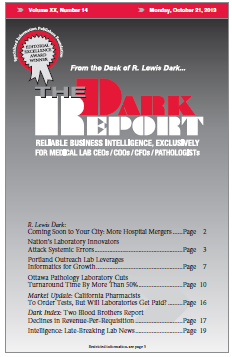CEO SUMMARY: One keynote speaker at this year’s Lab Quality Confab meeting tackled the sensitive subject of recurring bad quality within the lab and the costs associated with it. Lucia M. Berte, MA, MT(ASCP), showed a rapt audience how many sources of recurring bad quality exist and why lab staff must have adequate budgets to …
Nation’s Lab Innovators Attack Systemic Errors Read More »
To access this post, you must purchase The Dark Report.


